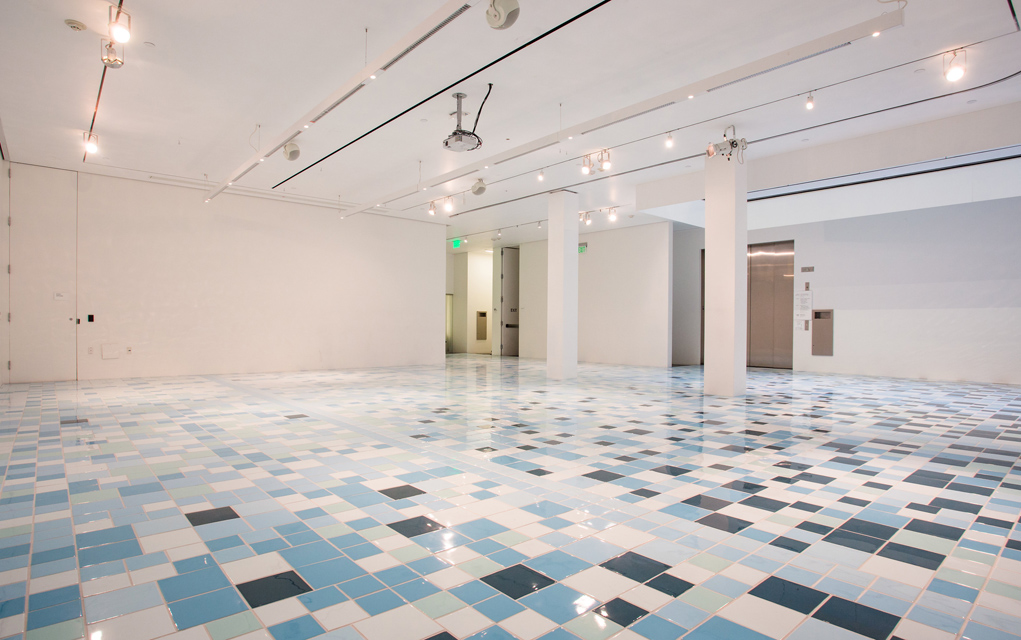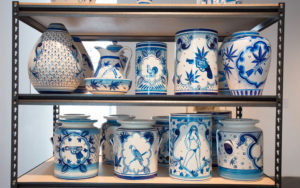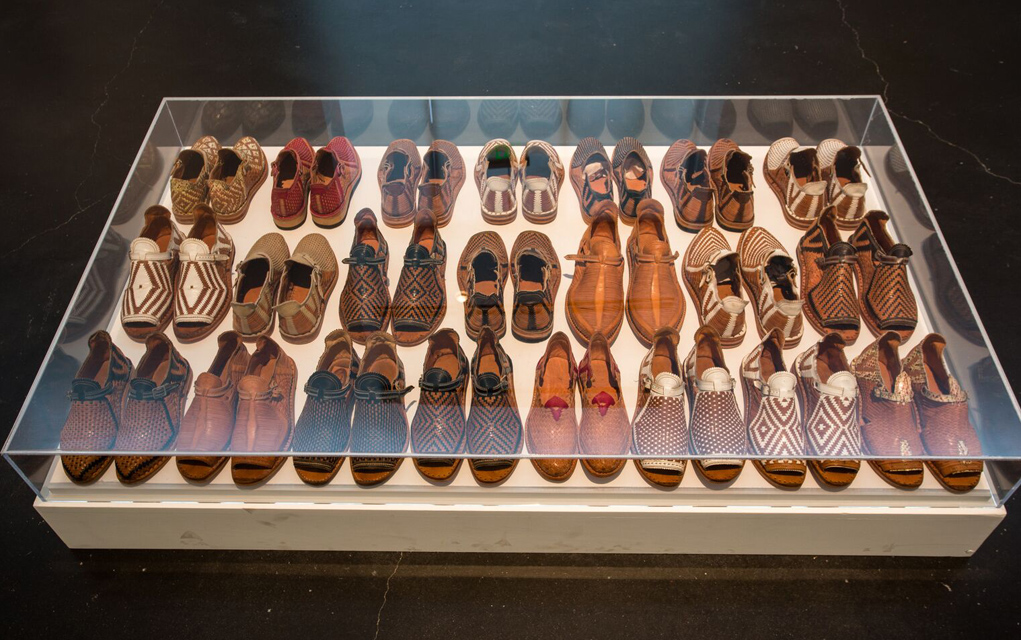
At first, you might not notice Jorge Pardo’s artwork in the Museum of Contemporary Art Denver’s latest exhibit Saber Acomodar: Art and Workshops of Jalisco 1915-Now. His piece sits in the basement level of MCA, which seems empty, but the art is beneath your feet.
While many people take for granted an aesthetically pleasing tile floor, it serves as a reminder that even ordinary items can be art. Pardo worked with famed Mexican ceramic studio Cerámica Suro to produce the multi-colored floor of handmade tiles.
“It’s a twist on the ready-made,” says Zoe Larkins, curatorial associate at MCA Denver. “They are everyday objects, but they’re not machine-made or mass-produced, and technically each is unique. … This is a handmade object and [the artist is] saying, ‘Take notice at someone who has skill that you don’t.’”
Born and raised in America, Pardo moved to Mexico to specifically work full time with Cerámica Suro. Pardo designs the pattern, and artisans at Cerámica Suro hand-cut and hand-glaze each tile.

The relationship between artist and artisan, like that of Pardo and Cerámica Suro, is one of many explored throughout Saber Acomodar, showing through Jan. 21. The exhibit features collaborations between artists and craft workers — potters, jewelers, printmakers, blacksmiths and more — who live and work in Jalisco, a western state in Mexico.
With works from more than 20 artists, Saber Acomodar has a wide scope, featuring multiple mediums from painting to sculpture to video to weaving to comic strip. They examine themes such as pop culture, history, politics and religion. Artists pull from Aztec imagery, but there are also influences from European art movements, demonstrating the infiltration of European abstraction into Mexico.
Many of the pieces utilize traditional craftsmanship to explore contemporary ideas, such as the work of Eduardo Sarabia, who also collaborates with Cerámica Suro. Sarabia creates ceramic pieces in the European style of the late 19th and early 20th centuries, but instead of the floral or ornamental patterns usually found on these works, Sarabia’s white and blue pottery features naked women, guns and drugs. By blending this conventional aesthetic with updated imagery, Sarabia is able to highlight the history of Mexico and its current challenges, like drug trafficking.

This style of pottery is one most audience members are familiar with. But the imagery — such as a bare-chested woman surrounded by marijuana leaves — draws the viewer in for a closer look. A new variation on the familiar makes one appreciate the craftsmanship.
Artists in Saber Acomodar make it a point to shine a light on the technical skill involved with making these objects, and the immense respect the artist has for the artisan.
In “Una escuela de huaracheros,” Claudia Fernández gathered multiple pairs of huaraches, traditional leather shoes handwoven by craft makers in Guadalajara, and put them in a display case.
Looking at these shoes in this way lets the viewer slow down and appreciate their intrinsic beauty. Fernández puts the huaraches in a new context for the viewer to see them as art.
“These are the sort of things where you go to Mexico, you go to a huaraches workshop or probably even a souvenir shop and buy these and wear them out, then throw them away,” Larkins says. “But here Claudia is saying, ‘No, these are art objects.’ These are carefully made by people with technical expertise in a method of working that the Aztecs originated … [and the artisans] modernized with buckles and rubber soles.”

This practice of reimagining art signals back to a famous disruptive work of the early 20th century by Marcel Duchamp. The 1917 piece, called “Fountain,” was nothing more than a plain porcelain urinal.
“Duchamp didn’t really care about showing the urinal as a cultural object. No one was going to all of a sudden appreciate the artistry that it took to make a urinal,” Larkins says. “They were more just scandalized that it was in an art space. It really was Duchamp saying, ‘I can take anything, and I can call it art because it’s me who gets to decide.’
“But [“Una escuela de huaracheros”] is forcing us to reengage with these objects,” Larkins continues. “In this sense, it’s way more about the object.”
The phrase “saber acomodar” doesn’t translate concisely into English, but its sentiment captures the essence of the exhibit.
“It has a couple different meanings,” Larkins says. “‘Saber acomodar’ means ‘know-how,’ like the idea of technical skill or savvy, which clearly the artisans who made the work have. It also means ‘to know how to place’ or ‘how to arrange,’ which gives it the idea of territorial work. But maybe even more appropriately to the context of this show is that gesture of artists knowing which objects to place in an institutional setting.”
The artists in the show are asking you to take a second look. As Larkins says, “Because artists like Claudia Fernández are putting these carefully made objects in an institutional context, she’s saying, ‘Yeah, as an artist working in 2017, I get to decide what’s art, and I get to tell you what you should look at as art, and I’m telling you to look at these.’”
On the Bill: Saber Acomodar: Art and Workshops of Jalisco
1915-Now. Museum of Contemporary Art Denver, 1485 Delgany St., Denver. Through Sunday, Jan. 21.














